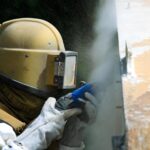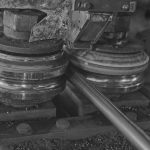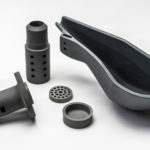Industrial processes are dictated by different, often conflicting, needs. Maximising throughput demands minimal downtime. But eliminating downtime is impossible when tools require maintenance to function at optimal levels. However, optimal functionality underlies desired yields and, of course, throughput. There is a cyclical nature to the demands of high-performance industrial components, but there is also a very clear throughline: maximising durability is critical to true quality assurance and profitability. Hence wear prevention is a critical factor impacting a wide range of end-to-end performance parameters.
Continue readingUnderstanding Wear and Recognising Different Wear Modes
Update: Originally posted in 2022, this blog was updated with new context on 27/02/2024.
Wear and tear are familiar concepts. But the mechanisms of action underlying these phenomena can be surprisingly complex. Wear is defined as the loss of material from a solid’s surface due to mechanical action exerted by some other solid. It is such a universal process that only organic materials are immune since they can self-replicate and essentially restore surface fatigue. Therefore, every branch of materials science must contend with one or more different wear mechanisms.
Continue readingSyalons at Ceramics UK 2022
Visit International Syalons at Ceramics UK, 29th/30th June 2022, NEC, Birmingham, UK. Booth: 18-532
British Ceramics Towards Net Zero
International Syalons are proud to announce their commitment towards net-zero carbon emissions by 2050 through membership of the BCC lead “British Ceramics: Towards Net Zero” sector initiative.
BCC – Pledge Conference and Awards 2021
International Syalons are delighted to receive two prizes at the British Ceramic Confederation health and safety Pledge conference and awards event in Stoke-on-Trent on 14th October 2021.
Materials Used in Advanced Ceramics Applications
Advanced ceramic applications are far-reaching, constantly evolving, and continue to drive innovation in engineering and technology. Different types of advanced ceramics each have specific characteristics, offering a high-performance, economical alternative to traditional materials such as metals, glass, and plastics.
Continue readingTransferring Molten Aluminium Safely with Crucibles & Ladles
Effective manufacturing of finished aluminium products or aluminium castings relies on efficient transferring of large amounts of liquid and solid metal. However, within even the biggest foundries and cast houses there are often instances where operators need to focus on smaller quantities of molten metal and the means of transferring it efficiently and safely.
7 Aluminium Applications & the Foundry Products Enabling Them
Aluminium is an extremely versatile metal with a wealth of applications in a variety of domains, made possible thanks to a range of specialist and technical foundry products that enable them. It is one of the most broadly used metals, second only to iron. This is largely due to its low melting point, malleability at room temperature, and its low density. Aluminium is corrosion resistant and is a good conductor of both electricity and heat.
Continue readingA Review of Light Metal Forming Techniques: Die-casting, Extrusion & More
Light metals are those which have a relatively low density. Some of the most commonly used light metals are aluminium, titanium, and magnesium.
Continue readingMolten Metal Handling: A Guide to Aluminium Processing
As industries across the globe require increasingly high product performance, molten metal quality is becoming more and more important. Aluminium is the second-most consumed metal across the globe and the market produces more than 50 million tons of aluminium every year.
Continue reading









